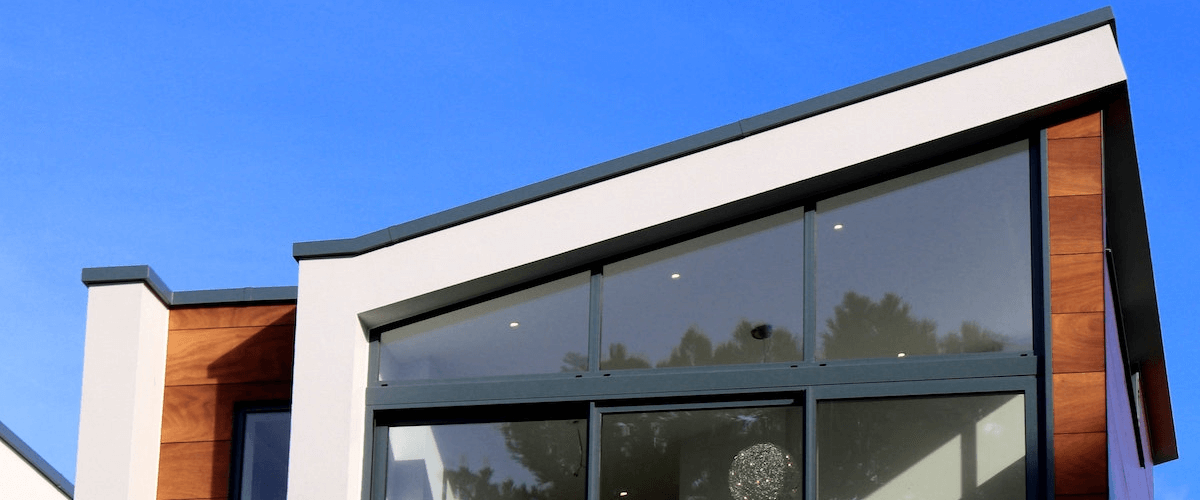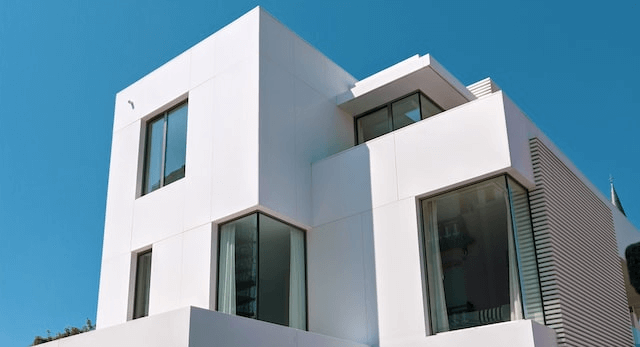A technique that dates back nearly 10,000 years, rendering walls is a great way to transform a worn-out building or house. Providing additional protection for bricks with a flawless finish, read on as we explore the trend for rendering.
What is rendering?
In the context of construction, rendering is the process of covering an exterior wall with lime or cement. Its purpose is to avoid costly repairs by protecting the brick, extending a wall’s lifespan by ten or twenty years. Rendering can also prevent moisture and damp from seeping into the walls and add a layer of extra insulation. Likewise, it can completely transform the look of a home and create a modern facade, particularly if the brickwork is old.

The different types of rendering there are
Polymer
Typically, pre-mixed polymer render is offered in bags with white cement or lime as the base material. It also consists of plastic-based products that reduce the risk of cracking and is available in a large range of colours.
Acrylic
The most common way to use acrylic render is as a thin layer to protect and improve the look of the underlying coat. Additionally, fibres are added to give a lasting finish and enhance the building with a nice texture.
Silicone
Much like acrylic, silicone is a cement-based and long-lasting render. Some even claim it allows rainwater to wash away dirt, making this render self-cleaning, and unlike acrylic, silicone is breathable too.
Cement
Cement render is usually mixed on site and applied in two coats. This makes it cheap in materials, but it can be labour-intensive. Cement render is also especially rigid and, therefore, prone to cracking, plus it requires regular repainting to keep it looking good.
lime
An eco-friendly option, lime plaster is great for those looking for ‘breathable’ house rendering. Flexible, this render is less prone to cracking, so it works well for period homes and adds a more attractive natural quality to the finished look.
Monocouche
French for ‘single coat’, Monocouche is a relatively new product in the rendering world. Offering the flexibility of lime combined with a low-maintenance finish, Monocouche is used by some of Europe’s biggest rendering names.

Colours available
Render can be painted in any colour you wish or supplied as a through-coloured mix, but this is the most expensive option. Made from pigment and white Portland cement to produce the desired effect, the colour can be seen throughout the body of the render material. Without the need for re-painting, a through-coloured mix is typically lower maintenance than the paintable option. Bear in mind, however, that light-coloured renders will need a regular clean in order to stay looking pristine.

Can you use stone or wood cladding with render?
Rendering can often be seen as part of a contemporary scheme with wood or stone cladding to create a modern, striking build. When used together, it helps to balance the look, add interest, and create an extra weather-resistant barrier.

Do you need planning permission to clad or render a house?
If you’re looking to render your home, chances are you won’t need any planning permission. This kind of update typically falls under permitted development, so you won’t need to apply as long as the materials used are of a similar nature to the original build. Cladding is also generally considered a permitted development, and so it’s allowed, like stone, larch or cedar. If the property is listed or commercial, however, then you will need to seek planning permission – always check with your local planning department before starting work.
5 benefits of modern rendering
1. It can improve thermal performance
Improving a property’s energy efficiency is a really great way to see a reduction in heating bills. Not only does render provide a slight insulating effect, but it can even boost thermal performance, especially if used with an External Wall Insulation (EWI) system. When you consider the average house loses half of its heat through the walls (about 40%), this is an excellent step to reducing drafts and improving air tightness. EWI will also enhance the aesthetic appeal of a build and potentially increase its value – who doesn’t love a sustainable home?
2. Rendering works for any kind of property
No matter whether your property is old or new, you’ll find a render to suit, and, as we touched on, it can affect its efficiency in a positive way. It should, however, only be applied if the walls are damp-free, don’t forget the whole purpose of render is to keep water away and increase a property’s resistance to weather. Lime plaster works well with older buildings, and modern cavity walls will also benefit from this breathable version. If water gets trapped in your walls, damp and mould can build up, which will eventually cause the surface to bubble.
3. The right one will allow your building to ‘breathe’
As we said, getting breathability right is essential if you want your rendering to last. Although the idea of a building that ‘breaths’ may seem a little far-fetched, take it from us they do. All buildings naturally absorb and release moisture, a result of the vapour from our showers, cooking and breath. For this reason, the type of render you choose must match the breathability of your walls, or you will trap moisture and end up causing a problem.
4. Modern render doesn’t crack
Most render these days are pretty resistant to cracks, especially those that have a silicone base. Given this material’s extremely versatile form, it is incredibly high performing and available in a variety of different coloured options. Although cement render has been known to crack in the past, this is now easily solved with a latex-based bond added into the mix. By forming a reinforcing polymer, the resistance of cement is increased, and so is its durability too.
5. It can create a desirable finishing touch
Another reason to render is the finishing touch; it can take a tired-looking house from old to new in a flash! Nothing beats a smooth, uniform finish, and a modern render will help, especially if you want to blend a new extension into the original building.
Consolidating water-repellent for rendering
From improved aesthetics to insulation, rendering a home has several great advantages. Keep your render protected and clean with CONCRETE HYDRO – made with FILA’s pioneering water-based technology.
